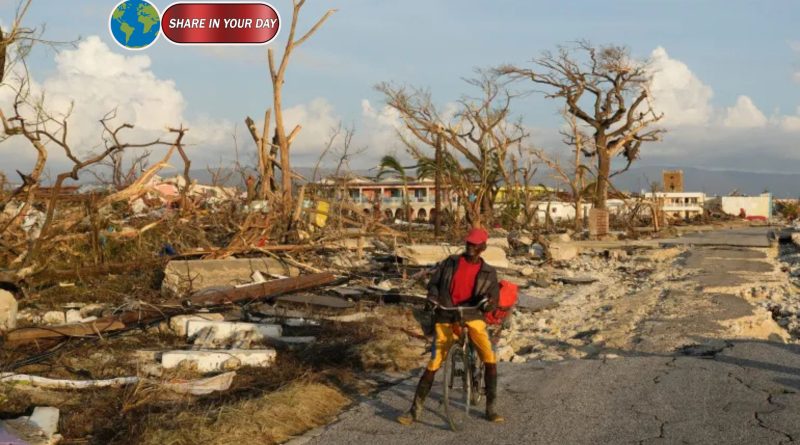Hurricane Melissa Leaves Devastation Across Jamaica and Haiti Amid Rising Death Toll
Widespread devastation in Jamaica and Haiti
In the aftermath of Hurricane Melissa, authorities report at least 50 deaths across Jamaica and Haiti, and expect the number to climb as search and rescue efforts continue.
In Jamaica, the storm struck as a Category 5 hurricane and left profound damage. Some regions reported up to 90 percent of roofs torn off, while more than 60 percent of the country remained without electricity, and nearly half of water systems were offline.
Meanwhile in Haiti, the southern region has been hit especially hard—officials confirmed 31 deaths, at least 21 people missing, and more than 15,800 people displaced and sheltering.
Cuba, though spared fatalities thus far, is dealing with flooding and large-scale evacuations. The eastern part of the island was hit by heavy rainfall—about 380 mm (15 inches) in some areas—and the overflowing Cauto River stranded many residents who required rescue.
A storm amplified by climate change
The storm’s intensity has drawn attention to how climate change is affecting hurricane behaviour. A study from Imperial College London found that Hurricane Melissa was made about four times more likely because of human-caused climate change.
This finding heightens longstanding concerns about how small island and coastal states are increasingly vulnerable to extreme weather events—both in terms of impact and recovery.
Economic and humanitarian impacts
Jamaica has activated a catastrophe bond with the World Bank that was issued in 2024, which provides US $150 million in financial protection for natural disasters up through 2027. The bond has already been triggered by Melissa, marking a rare use of such innovative financing in the Caribbean.
With infrastructure damaged, people displaced and basic services disrupted, the humanitarian and economic toll is mounting. In Jamaica, one resident reported, “Everything is gone,” describing the destruction in communities near Black River.
Authorities in Jamaica also cautioned donors to use official channels for donations, warning against potential scams in the wake of the disaster.
The road ahead
As power is restored, displaced persons are rehoused and missing individuals searched for, the full scope of the damage is still being assessed. With roofs gone, water systems down and large-scale displacement, recovery will be long and costly.
For Haiti, the challenge is compounded by existing vulnerabilities—limited infrastructure, economic constraints and ongoing humanitarian needs. For Jamaica, while disaster financing mechanisms exist, the scale of this event will test resilience systems and long-term planning.
What you should know
The death toll stands at around 50 across Jamaica and Haiti, but more fatalities are expected as assessments continue.
Infrastructure damage is extensive: major power and water outages in Jamaica; flooding and evacuations in Cuba; shelters housing thousands in Haiti.
Climate change played a measurable role in increasing the storm’s likelihood and intensity.
Disaster financing is playing a role (e.g., Jamaica’s catastrophe bond), but large-scale recovery efforts remain ahead.
Donors and aid organisations are urged to coordinate through official channels to ensure genuine support.





